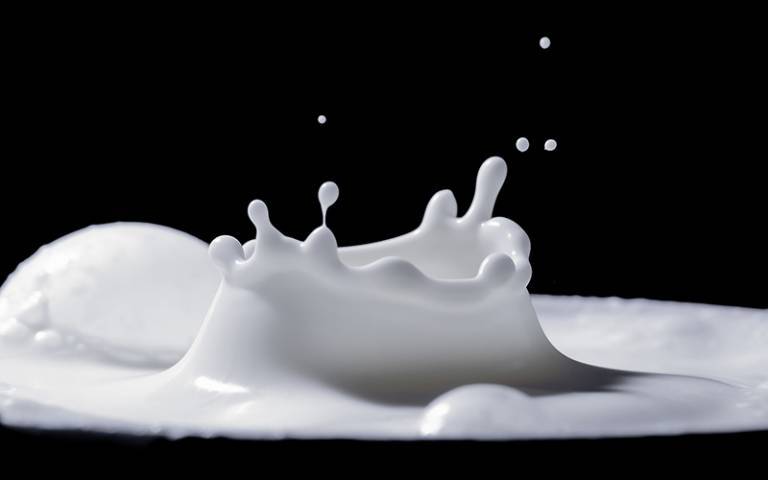Famine and disease drove the evolution of lactose tolerance in Europe
29 July 2022

The research, published in Nature, mapped pre-historic patterns of milk use over the last 9,000 years, offering new insights into milk consumption and the evolution of lactose tolerance.
Until now, it was widely assumed that lactose tolerance emerged because it allowed people to consume more milk and dairy products. But this new research shows that famine and exposure to infectious disease best explain the evolution of our ability to consume milk and other non-fermented dairy products.
Joint senior author Professor Mark Thomas (UCL Genetics, Evolution & Environment) said: “In late prehistory, as our ancestors started living in larger settlements, their health was increasingly impacted by poor sanitation and increased pathogen loads. Under such conditions, even more so during times of famine, consuming milk would have increased death rates, particularly among those unable to digest the lactose in milk. Those who were able to digest lactose were thus more likely to pass on their genes enabling them to safely drink milk.”
While most European adults today can drink milk without discomfort, two thirds of adults in the world today, and almost all adults 5,000 years ago, can face problems if they drink too much milk. This is because milk contains lactose, and if we don’t digest this unique sugar, it will travel to our large intestine where it can cause cramps, diarrhoea, and flatulence; known as lactose intolerance. However, this new research suggests that in the UK today these effects are rare.
Professor George Davey Smith, Director of the MRC Integrative Epidemiology Unit at the University of Bristol and a co-author of the study, said: “To digest lactose we need to produce the enzyme lactase in our gut. Almost all babies produce lactase, but in the majority of people globally that production declines rapidly between weaning and adolescence. However, a genetic trait called lactase persistence has evolved multiple times over the last 10,000 years and spread in various milk-drinking populations in Europe, central and southern Asia, the Middle East and Africa. Today, around one third of adults in the world are lactase persistent.”
By mapping patterns of milk use over the last 9,000 years, probing the UK Biobank, and combining ancient DNA, radiocarbon, and archaeological data using new computer modelling techniques, the team were able to show that the lactase persistence genetic trait was not common until around 1,000 BC, nearly 4,000 years after it was first detected around 4,700–4,600 BC.
Professor Thomas added: “The lactase persistence genetic variant was pushed to high frequency by some sort of turbocharged natural selection. The problem is, such strong natural selection is hard to explain.”
In order to establish how lactose persistence evolved, Professor Richard Evershed, the study’s lead from Bristol’s School of Chemistry, assembled an unprecedented database of nearly 7,000 organic animal fat residues from fragments of pottery from 554 archaeological sites to find out where and when people were consuming milk. His findings showed milk was used extensively in European prehistory, dating from the earliest farming nearly 9,000 years ago, but increased and decreased in different regions at different times.
To understand how this relates to the evolution of lactase persistence, the UCL team, led by Professor Thomas, assembled a database of the presence or absence of the lactase persistence genetic variant using published ancient DNA sequences from more than 1,700 prehistoric European and Asian individuals. They first saw it after around 5,000 years ago. By 3,000 years ago it was at appreciable frequencies and is very common today. Next, his team developed a new statistical approach to examine how well changes in milk use through time explain the natural selection for lactase persistence. Surprisingly, they found no relationship, even though they were able to show they could detect that relationship if it existed, challenging the long-held view the extent of milk use drove lactase persistence evolution.
Professor Davey Smith’s team had been probing the UK Biobank data, comprising genetic and medical data for more than 300,000 living individuals, and found only minimal differences in milk drinking behaviour between genetically lactase persistent and non-persistent people. Critically, the large majority of people who were genetically lactase non-persistent experienced no short or long-term negative health effects when they consume milk.
Professor Davey Smith added: “Our findings show milk use was widespread in Europe for at least 9,000 years, and healthy humans, even those who are not lactase persistent, could happily consume milk without getting ill. However, drinking milk in lactase non-persistent individuals does lead to a high concentration of lactose in the intestine, which can draw fluid into the colon, and dehydration can result when this is combined with diarrhoeal disease.
Meanwhile, Professor Thomas had been thinking along related lines, but with more of an emphasis on prehistoric famines. He reasoned: “If you are healthy and lactase non-persistent, and you drink lots of milk, you may experience some discomfort, but you not going to die of it. However, if you are severely malnourished and have diarrhoea, then you’ve got life-threatening problems. When their crops failed, prehistoric people would have been more likely to consume unfermented high-lactose milk – exactly when they shouldn’t.”
To test these ideas, Professor Thomas’ team applied indicators of past famine and pathogen exposure into their statistical models. Their results clearly supported both explanations – the lactase persistence gene variant was under stronger natural selection when there were indications of more famine and more pathogens.
The study involved collaborators from 21 countries, and was supported by funding from the Royal Society, the Medical Research Council (MRC), Natural Environment Research Council (NERC), and the European Research Council.
Links
- Research paper in Nature
- Professor Mark Thomas’ academic profile
- UCL Centre for Life's Origins & Evolution
- UCL Genetics, Evolution & Environment
- UCL Biosciences
- Media coverage
Image
- Source: Myriams-Fotos on Pixabay
 Close
Close

